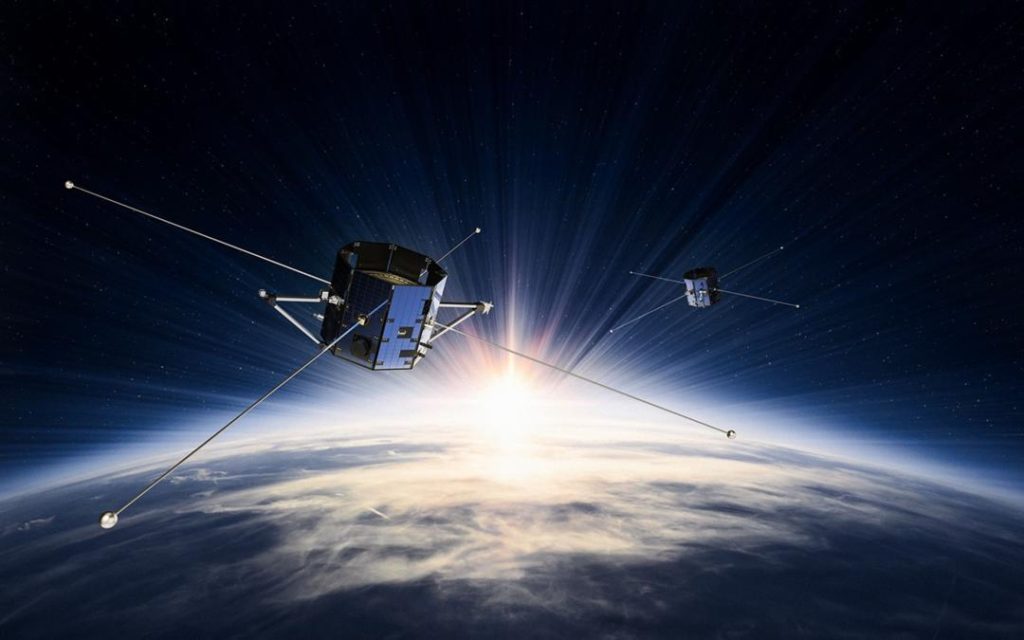
NASA Launches Twin Satellites to Study Earth’s Magnetic Shield
The Earth’s magnetic shield is a vital component of our planet’s defense system, protecting us from harmful solar winds and cosmic radiation. However, this shield is not static, and its shape and behavior can change significantly over time. To better understand these changes, NASA has launched a unique mission, called TRACERS (Twin Reconnection and Acceleration in the Corona of the Earth’s Shield), comprising twin satellites that will fly in tandem, taking precise measurements of the Earth’s magnetic field.
The TRACERS mission is designed to study the process of magnetic reconnection, a phenomenon that occurs when the Earth’s magnetic field interacts with the solar wind. During magnetic reconnection, the magnetic field lines are broken and re-formed, releasing a vast amount of energy in the process. This energy can be harnessed by the Earth’s magnetic shield, but it can also be released into space, affecting the surrounding environment.
The twin satellites, named T1 and T2, were launched into space on November 22, 2022, from Vandenberg Space Force Base in California. They will fly in a unique formation, with T1 leading the way and T2 following 10 seconds behind, allowing them to collect data over the same location. This coordinated approach will enable scientists to capture the dynamic changes in the Earth’s magnetic field with unprecedented precision.
Over the course of a year, the TRACERS satellites will take approximately 3,000 measurements of the Earth’s magnetic field, providing scientists with a comprehensive understanding of how magnetic reconnection changes over time. The data collected will be used to develop more accurate models of the Earth-Sun connection, which is essential for predicting space weather events, such as solar flares and coronal mass ejections.
The TRACERS mission is a significant advancement in the field of space weather research, as it will provide scientists with a better understanding of the Earth’s magnetic shield and its interactions with the solar wind. This knowledge will be crucial for predicting and mitigating the effects of space weather on our planet’s magnetic field and the technological systems that rely on it.
“We’re excited to launch this innovative mission, which will give us a deeper understanding of the Earth’s magnetic shield and its connection to the Sun,” said Dr. Sarah Jones, TRACERS mission scientist at NASA’s Goddard Space Flight Center. “The data we collect will help us improve our predictions of space weather and better protect our planet from its effects.”
The TRACERS satellites are equipped with advanced instruments designed to measure the Earth’s magnetic field, solar wind, and plasma density. The data collected will be transmitted back to Earth, where it will be analyzed by scientists using sophisticated algorithms and simulation models.
The TRACERS mission is a collaborative effort between NASA and the University of California, Los Angeles (UCLA), with the support of the National Science Foundation (NSF). The mission is expected to last for at least two years, during which time the satellites will continue to collect data and provide scientists with valuable insights into the Earth’s magnetic shield.
In conclusion, the TRACERS mission is a significant achievement in the field of space weather research, and its findings will have far-reaching implications for our understanding of the Earth-Sun connection. The twin satellites will fly in tandem, taking precise measurements of the Earth’s magnetic field, and providing scientists with a comprehensive understanding of how magnetic reconnection changes over time. As we continue to explore the wonders of space, the TRACERS mission is an important step forward in our quest to better understand our planet’s magnetic shield and its vital role in protecting our planet.
Source: https://www.nasa.gov/news-release/nasa-launches-mission-to-study-earths-magnetic-shield/






